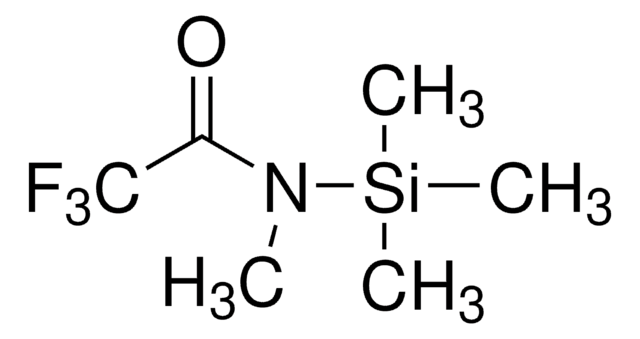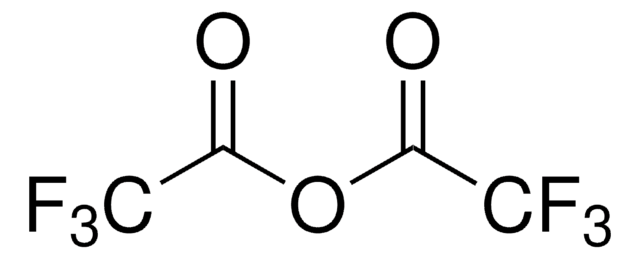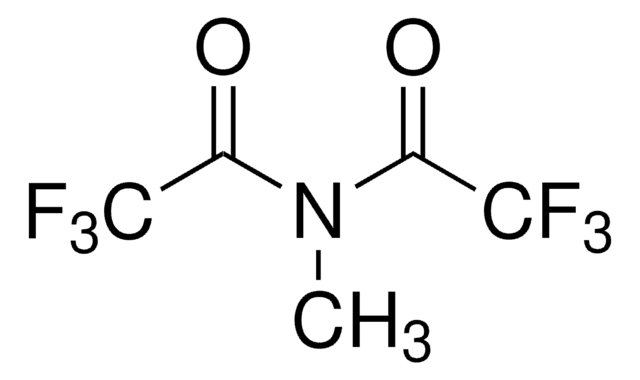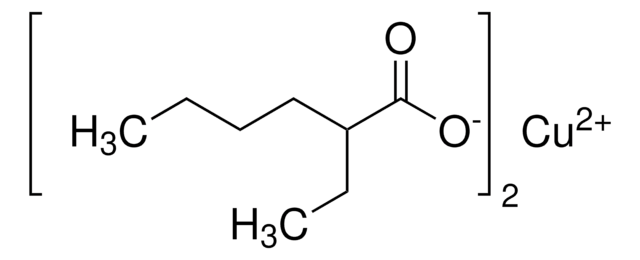375934
N-tert-Butyldimethylsilyl-N-methyltrifluoroacetamide
≥95%, with 1% tert-Butyldimethylchlorosilane
Synonym(s):
MTBSTFA+TBDMSCl, 99:1, N-Methyl-N-tert-butyldimethylsilyltrifluoroacetamide, MTBSTFA + 1% TBDMSCl, Silylating mixture VI
About This Item
Recommended Products
Product Name
N-tert-Butyldimethylsilyl-N-methyltrifluoroacetamide with 1% tert-Butyldimethylchlorosilane, ≥95%
Quality Level
Assay
≥95%
form
liquid
contains
1% TBDMSCl
functional group
amine
fluoro
storage temp.
−20°C
SMILES string
CN(C(=O)C(F)(F)F)[Si](C)(C)C(C)(C)C
InChI
1S/C9H18F3NOSi/c1-8(2,3)15(5,6)13(4)7(14)9(10,11)12/h1-6H3
InChI key
QRKUHYFDBWGLHJ-UHFFFAOYSA-N
Looking for similar products? Visit Product Comparison Guide
Application
related product
Signal Word
Warning
Hazard Statements
Precautionary Statements
Hazard Classifications
Eye Irrit. 2 - Flam. Liq. 3 - Skin Irrit. 2
Storage Class Code
3 - Flammable liquids
WGK
WGK 3
Flash Point(F)
113.0 °F - closed cup
Flash Point(C)
45 °C - closed cup
Personal Protective Equipment
Choose from one of the most recent versions:
Already Own This Product?
Find documentation for the products that you have recently purchased in the Document Library.
Articles
Results of a study involving the ability few Fluka silylating reagents to form GC-MS-compatible trimethylsilylmethyl derivatives of NSAIDs
Global Trade Item Number
| SKU | GTIN |
|---|---|
| 375934-10X1ML | 4061837790256 |
| 375934-25ML | 4061831835106 |
| 375934-5ML | 4061831835113 |
Our team of scientists has experience in all areas of research including Life Science, Material Science, Chemical Synthesis, Chromatography, Analytical and many others.
Contact Technical Service







